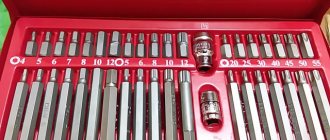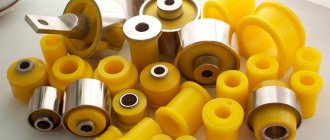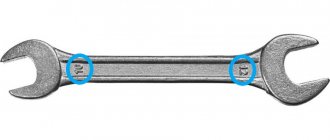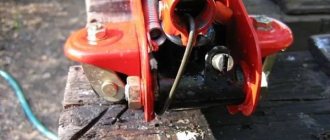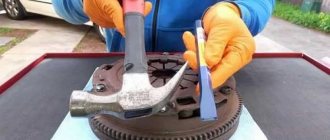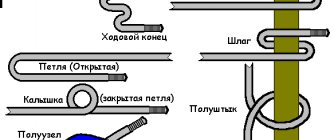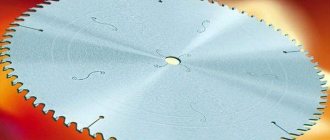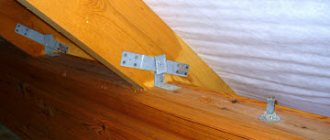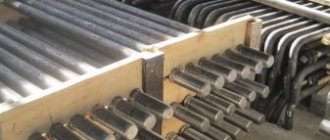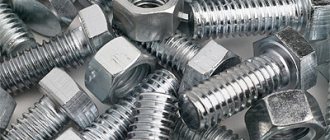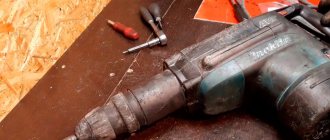The spring washer, or as it is also called, the Grover, has found its wide application in all areas, especially mechanical engineering. Let us consider in more detail the features of its design, quality requirements, production, as well as situations in which it is impossible to do without it and, conversely, when the use of such a fastening element is unacceptable.
Spring washer - let’s get acquainted with the purpose of the product
Let's start with history, especially since its roots do not go back too far. It all started at the end of the 19th century, when the rapid development of mechanical engineering required new, better threaded connections. After all, standard types of nuts and bolts simply could not withstand all the loads, vibrations and vibrations falling on the moving parts of components and mechanisms. Moreover, the consequences were of a very different nature; as a result of weakening or even unscrewing of fastening elements, the strength of the connections was significantly reduced, and fatigue failures occurred. However, replacing this type of fastening with riveted ones was also not a solution. Firstly, they are not always convenient to use, which significantly hampered progress and the development of new elements. Secondly, even if this worked somewhere, difficulties subsequently arose with the maintenance of such mechanisms. In general, a fundamentally new threaded connection was required that could withstand shock loads and act as a stopper, so to speak, which is what the lock washer became. As you know, all the most ingenious things are incredibly simple things, this rule also applies to such a product. This washer looks like one coil of a spring, which is where the name comes from. At the same time, it works flawlessly, due to the fact that its gap diverges in the direction opposite to the rotation of the nut, which prevents it from unscrewing. Thus, during forward stroke, the fastening unit moves without obstacles. However, rotation in the opposite direction is prevented by the edge of the groover, which, as it were, digs into the metal and ensures the locking of the nut .
Grover washer - production and materials
The spring washer-grower (GOST 6402-70) must meet the requirements described in the above documentation. So, these elements are mainly made of steel, but bronze and other non-ferrous metals are also allowed, but we’ll talk about them in more detail below. The hardness of steel products ranges from 40 to 48 HRC (Rockwell C units). If the material is St 70, then this parameter can reach 50 HRC, and bronze growers must have a hardness of at least 90 HRC. The presence of burrs, scale, cracks, and pockets of corrosion is considered unacceptable defects. Traces of inseparable scale and minor defects in the cut plane, which do not affect either the dimensions or strength characteristics of the product, are acceptable. The trapezoidal cross-section is also not considered defective, but only if it does not go beyond the permissible height. Such washers are also tested. After compression three times so that the diverging ends come together and a flat surface is formed, and further exposure for 24 hours in this state, the height of the divorced ends should be at least 1.65 parts of the thickness of the part. Of course, products should not break or crack. Having familiarized ourselves with the requirements for this type of fasteners, we will consider some of the features of their production. Of course, all the parameters that the washer-grower must meet - dimensions, strength, permissible and unacceptable defects, material, as well as type of coating - are indicated in the technical documentation, such as GOST or DIN. It is also worth noting that there are four types of such washers: normal (N), heavy (T), extra heavy (OT) and light (L). The first three types have a cross-section in the shape of a square, while the last ones have a rectangular cross-section. Spring steel is very often used as a material, and then the part is subjected to heat treatment, due to which internal stresses in the alloy are relieved, its strength characteristics are increased, as well as resistance to external influences. In addition, fragility is reduced, and this is all incredibly important, especially considering the purpose of these parts. But achieving the required properties is ensured not only by a set of heat treatment measures. This type of washers can also be coated with a special protective coating (chrome plating or galvanizing). True, this is not necessary, so growers are also available without coating. Galvanizing and chrome plating primarily provide reliable protection against corrosion. Galvanic galvanizing is carried out by electrochemical deposition of zinc particles onto the surface of a part, which is previously placed in an electrolyte. As a result, a layer with a thickness not exceeding 25 microns is formed, and the washer acquires a blue, white or rainbow tint. The next way to protect a product from corrosion is yellow chrome plating, in which the surface is saturated with chromium. At the same time, the wear resistance of the washers and hardness further increase.
Who invented the Grover Puck?
WASHER
GROVER - principle of operation, production options
Washer
Grovera is an unacceptable name, according to GOST 27017, for a single-turn spring washer GOST 6402-70, but has long firmly taken its place. English engineer William Grover invented a new type of fastener in the wake of the rapid growth of various inventions in the 19th century.
Interesting materials:
How to remove a screenshot on iPhone? How to remove smart color inversion on iPhone? How to remove surveillance from your iPhone? How to remove WhatsApp status on iPhone? How to remove widgets page on iPhone? How to remove scratches from iPhone 8? How to remove scratches from the sides of iPhone 10? How to remove scratches from iPhone 10 screen? How to remove scratches from iPhone 11 screen? How to remove scratches from an apple on an iPhone?
Final conclusion
Such conflicting opinions lead one to wonder whether such a part is needed in the fastener? Based on the results of the analyses, the following conclusion can be drawn. The spring washer performs its locking functions and has advantages over other elastic washers due to its low cost.
The conclusion suggests itself: if the Grover washer is cheaper in comparison with others, but has locking properties and is technologically advanced in production, then why refuse it?
Lanyard for rigging workCrab system for profile pipes: features of the selection and use of fastening systems and connecting elements
What is a rigging shackle? Size standards, modern types, rules and features of choice
It may not be included in the catalog of the best products, but it is not always necessary to use expensive materials if vibration loads occur in isolated cases.
Standardization [edit | edit code ]
RF [edit | edit code ]
According to GOST 6402-70, spring washers can be manufactured in four types [8]:
- N - normal with a square cross section;
- T - heavy with a square cross section;
- OT - extra heavy with a square cross section;
- L - lungs with a rectangular cross section.
The difference between the types lies in the cross-sectional dimensions of the washer and the amount of force required for its elastic deformation.
Washers can be made of wire (grades 65G, 70, 30X13 according to GOST 11850-72); It is also possible to manufacture from bronze (grade BrKMts 3-1 according to GOST 18175-78) or other non-ferrous alloys.
The hardness of steel washers should be 40-48 HRC, bronze washers - at least 90 HRB.
GOST 19115-91 [9] describes the option [ source?
] Grover - spring travel washers.
EU [edit | edit code ]
Grovers were standardized through DIN 127. In the 1960s, the low efficiency of this washer was discovered and other standards were adopted, such as DIN 128 (curved and wavy shapes). These and many other DIN standards have been withdrawn because growers do not work well with hard steel bolts and nuts. As of the beginning of the 21st century, the only surviving standard for spring washers is DIN 6976 (spring disc washer, non-grower) [7].
The spring washer, or as it is also called, the Grover, has found its wide application in all areas, especially mechanical engineering. Let us consider in more detail the features of its design, quality requirements, production, as well as situations in which it is impossible to do without it and, conversely, when the use of such a fastening element is unacceptable.
Spring washer - let’s get acquainted with the purpose of the product
Let's start with history, especially since its roots do not go back too far. It all started at the end of the 19th century, when the rapid development of mechanical engineering required new, better threaded connections. After all, standard types of nuts and bolts simply could not withstand all the loads, vibrations and vibrations falling on the moving parts of components and mechanisms.
Moreover, the consequences were of a very different nature; as a result of weakening or even unscrewing of fastening elements, the strength of the connections was significantly reduced, and fatigue failures occurred.
However, replacing this type of fastening with riveted ones was also not a solution. Firstly, they are not always convenient to use, which significantly hampered progress and the development of new elements.
Secondly, even if this worked somewhere, difficulties subsequently arose with the maintenance of such mechanisms. In general, a fundamentally new threaded connection was required that could withstand shock loads and act as a stopper, so to speak, which is what the lock washer became.
As you know, all the most ingenious things are incredibly simple things, this rule also applies to such a product. This washer looks like one coil of a spring, which is where the name comes from.
At the same time, it works flawlessly, due to the fact that its gap diverges in the direction opposite to the rotation of the nut, which prevents it from unscrewing. Thus, during forward stroke, the fastening unit moves without obstacles.
However, rotation in the opposite direction is prevented by the edge of the groover, which, as it were, digs into the metal and ensures the locking of the nut .
Grover washer - production and materials
The spring washer-grower (GOST 6402-70) must meet the requirements described in the above documentation. So, these elements are mainly made of steel, but bronze and other non-ferrous metals are also allowed, but we’ll talk about them in more detail below.
The hardness of steel products ranges from 40 to 48 HRC (Rockwell C units). If the material is St 70, then this parameter can reach 50 HRC, and bronze growers must have a hardness of at least 90 HRC.
Action [edit | edit code]
When tightening the connection, the sharp edges of the groover, placed between the part being connected and the nut (or screw head), cut into the flat surfaces of the connection and subsequently prevent the connection from coming loose from vibrations. This mechanism of action makes growers ineffective on left-handed threads or very hard surfaces.
The effectiveness and reliability of growers were questioned at the end of the 20th century [6]. The Society of Automotive Engineers has not recommended them for critical connections since 1969 [ source unspecified 774 days
] . The DIN 127 standards describing growers have been withdrawn [7].
Other Applications
In addition to the listed industries, grower washers are also used in:
- electrical appliances;
- household appliances;
- designers;
- metal furniture and shelving.
And in many other places where reliable fastening is required. Naturally, the price of a Grover washer for such products differs significantly from that indicated above.
Application
The area in which it is impossible to do without spring washers is very wide, but most often they are needed:
- in the production of machines;
- in construction;
- in heavy industry;
- in automobile construction.
The price of a grower is not very high, the cost of one kilogram of locking washers ranges from sixty to one hundred and seventy rubles, it depends on their size and type, but they bring tangible benefits.
The locking washer is an indispensable part when fastening device elements, especially when they are subjected to vibration or other loads, which result in loosening of the moving joints. Such actions can become too dangerous for the environment.
But despite the widespread use of growers, there are situations where their use is not recommended. Since the fixation of the nut occurs due to sharp edges that cut into the surface of the product that does not have sufficient strength, they significantly damage it. Therefore, growers do not use parts made of soft materials when fastening.
Action [edit | edit code]
When tightening the connection, the sharp edges of the groover, placed between the part being connected and the nut (or screw head), cut into the flat surfaces of the connection and subsequently prevent the connection from coming loose from vibrations. This mechanism of action makes growers ineffective on left-handed threads or very hard surfaces.
The effectiveness and reliability of growers were questioned at the end of the 20th century [4]. The Society of Automotive Engineers has not recommended them for critical connections since 1969 [ source unspecified 654 days
] .
Features of choice
When buying a nut grower, you need to consider several important parameters:
- its thickness;
- the size of the gap between the surfaces of the ends - no more than the thickness multiplied by a factor of 0.7;
- washer height;
- the diameter of the bolt or screw that the part will be used to strengthen.
It is also important to pay attention to the quality of workmanship. Surfaces should be free of scale, cracks or signs of corrosion. But minor defects and small scale in the cut areas are acceptable. Of course, if they do not affect the dimensions of the part and its quality parameters.
Sometimes a trapezoidal cross section is found. This will not be a problem if it corresponds to the established height of the washer itself.
Varieties, material and manufacturing methods
The product in question is manufactured taking into account the standards established in GOST 6402-70. It specifies what materials and methods should be used. Among the features of the choice of metal, we note the following points:
- It is allowed to use steel, as well as bronze and some other non-ferrous alloys.
- Hardness should vary from 40 to 48 HRC when using common steel grades. If bronze is used, the value is at least 90 HRC. The weight and some other indicators largely depend on the type of material used.
- During production, various methods can be used, but the appearance of cracks, scale, burrs and other defects is not allowed. In some cases, only minor defects are acceptable that do not affect the performance characteristics of the product.
- To identify the main qualities, a flat washer is subjected to various tests.
A situation often occurs when, in the manufacture of a spring washer, special spring steel is used, which has special performance characteristics.
To achieve the required properties, heat treatment is carried out, due to which the hardness increases and the brittleness decreases.
